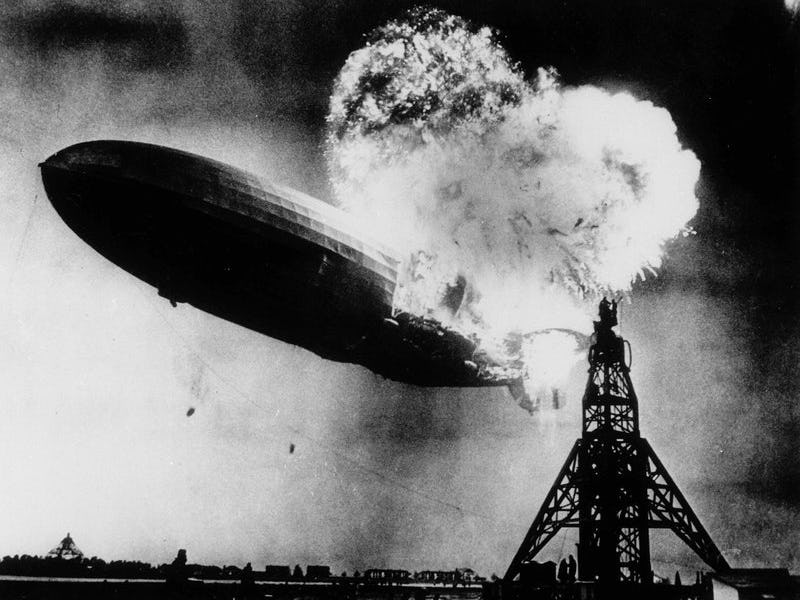3 Ways the Hindenburg Disaster Improved Aviation
The last 80 years of flight would not have been the same without it.

Saturday marks the 80th anniversary of the Hindenburg Disaster. The German airship burst into flames and crashed into Naval Air Station Lakehurst in New Jersey on May 6, 1937.
Thirty-six were killed and 62 survived, only one of whom is still alive. Footage of the violent crash was burned into the world’s cultural memory, and its legacy in flying extends for years.
Here are three effects of the infamous crash that changed the future of aviation forever:
1. The End of Airships
Once the premier way to travel, the airships in the Hindenburg’s day were both more advanced and luxurious than airplanes. But after seeing the fearful carnage wrought by the Hindenburg’s fiery end — a sight that shocked the world — the public wasn’t able to fully recover its trust and interest in airships.
A New York Times report from May 8, 1937, two days after the incident, declared: “Experts See Costly Loss of Commercial Riders Unless ‘Unsafe’ Stigma is Ended,” even as Germany vowed to continue its airship services.
It was evident even then that public trust in the idea of zeppelins was fatally shaken. Before long, bowing to their inability to survive on the market, Germany grounded the last of its hydrogen airships.
However, in recent years, some have explored the possibility of bringing back airships in a commercial capacity.
2. The Rise of Airplanes
Considered both safer and more economical than their air-filled predecessors, airplanes were the perfect vehicle to fill the industry gap left by airships. Not two years before the Hindenburg met its end, in November 1935, a Pan Am China Clipper aircraft completed an 8,000-mile flight from Alameda, California to Manila in the Phillippines. The flight time was just under 60 hours — unfathomably slow by modern standards — but it was nevertheless a strong proof-of-concept for airplane technology and was met with much excitement by the public.
Since World War II broke out only a few years after the Hindenburg crash, the commercial potential of airplanes wasn’t fully tested until the war’s end in 1945. By then they had already proven themselves in a military function, and their proponents were eager to show that they had a role in civilian travel as well.
An astounding 25 commercial airlines were founded in 1945, more than twice as many as any prior year. That number was dwarfed in 1946 when 58 more were founded.
A scene of chaos immediately after the crash.
3. Helium Blimps
The Hindenburg was consumed by flames in just 37 seconds. The blaze was able to spread so quickly because the airship was filled with hydrogen, a highly flammable gas, in accordance with some pretty strange U.S. law.
A German aviation expert admitted on May 22 that “the only cause he could ascribe to an explosion of such force was a mixture of hydrogen and air,” but said he still didn’t know what caused the hydrogen to ignite in the first place.
It was determined in 2013 that static electricity was the cause. Modern blimps are filled with helium, a non-flammable gas, in order to prevent similar disasters from occurring.
Flames shoot out of the Hindenburg's nose as the ignited hydrogen escapes.